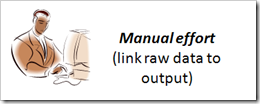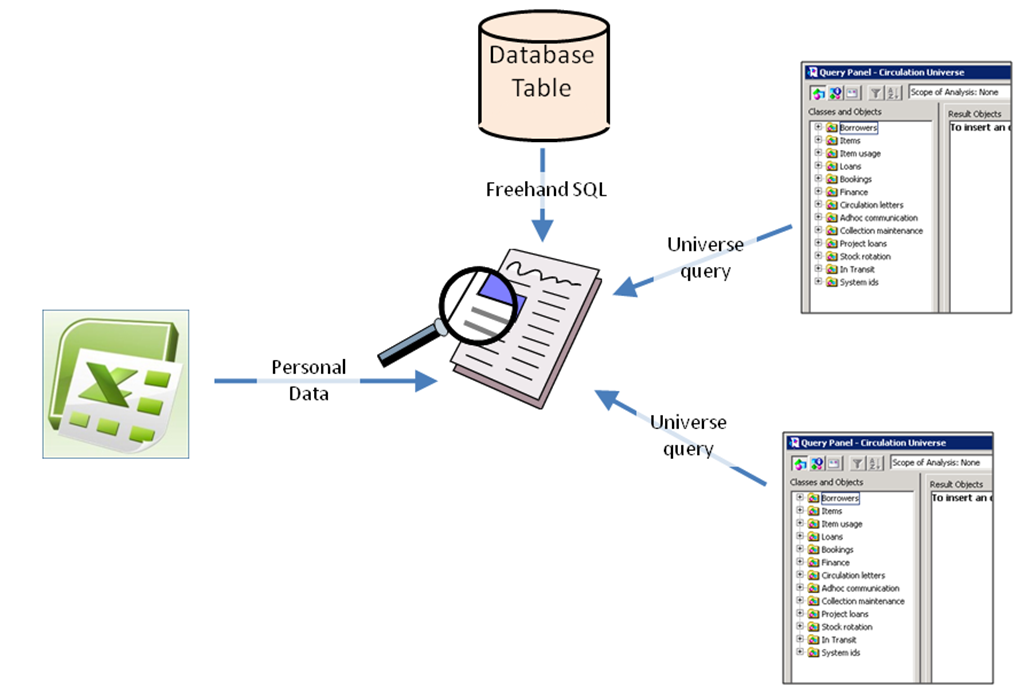Combining data from multiple Sources
Last week I posted a few examples of reports that combined data from the Netloan and standard universes. Someone has since asked me to talk a bit more about combining data from multiple sources.
In principle, any Management Information or Business Intelligence tool works like this:
It is possible to use any of the following to do this:
- Self service tools like Talis Decisions
- Fixed reports built internally using a toolset like Qlikview, Dynistics or LogiXML
- Fixed reports built by a third party like SmartSM
- Data warehouses built on powerful (and expensive) enterprise software from companies like Oracle.
- Web based service like Pivotlink
In principle all these approaches use this same basic pattern. Most store copies of the data in some form
 Regardless of the approach, the devil is in the detail. If your data source is at all complex, it takes significant skilled manual effort to link the raw data to the output regardless of approach. Don’t let a tool vendor tell you otherwise.
Regardless of the approach, the devil is in the detail. If your data source is at all complex, it takes significant skilled manual effort to link the raw data to the output regardless of approach. Don’t let a tool vendor tell you otherwise.
Either a third party does this work, in which case the user is stuck with little flexibility, or he/she has quite a lot of work to do before seeing useful output.
Talis Decisions tackles this in two steps in an attempt to get the best of both worlds: (relative) simplicity and far greater flexibility than is possible with pre-built reports
- Talis supplies a number of pre-built “Universes” to simplify the process of extracting the data
- The user (or a technical intermediary) builds the required reports using the Universes rather than going back to the raw data
Sometimes however, a user may want to produce a report which contains data from different Universes, or even combine data from a Universe with (for example) data from a spreadsheet on the user’s PC. This was the approach used in the Netloan examples.
A blog isn’t the place to go into a lot of technical detail, but the fundamental approach is to define multiple queries and merge the results of all the queries in Talis Decisions. There is an article on this on the Talis Developer Network (TDN).
Web intelligence allows multiple Universe queries. Desktop Intelligence also allows the use of local files (“Personal Data”) and “Freehand SQL” (there is a TDN article on Freehand SQL too) which allows you to query the database directly if you wish. Putting it all together, you can create a report combining data from a range of sources:
The first two Netloan examples just combined two Universes, the third one two Universes and spreadsheet.data..



Recent Comments